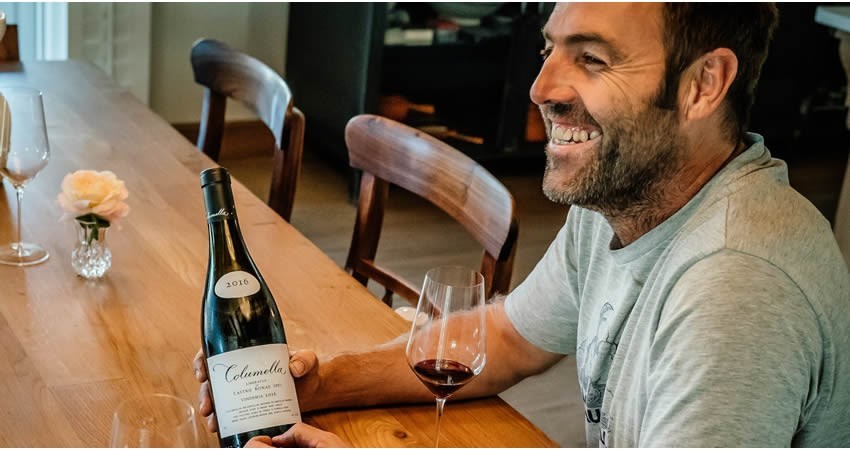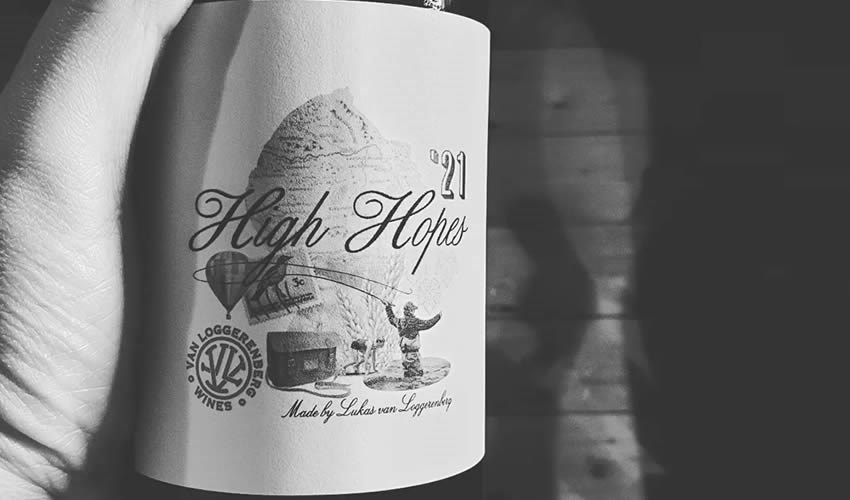First, the subatomic details. The magic happens inside the berry.
Although often seen as a modern affect, whole cluster winemaking is actually anachronistic. Old-timey producers long used to foot-stomp whole bunches in concrete tanks before the invention of destemming machines.
‘Whole-cluster’ is being used here as the catchall term for a range of techniques that includes whole bunch, whole berry, carbonic maceration (partial and whole) and crushed clusters. The definition also makes room for stems added into wine must in a bid for palate detail as well as freshness.These methods are generally used for red winemaking, though there are white wine exceptions. Or, for traditional method sparkling wine whereby whole bunches are gently pressed to release the first allotment of pure, free-run juice.
For carbonic maceration whole clusters are placed under a blanket of CO2 in a sealed tank for a period of time. Partial or semi-carbonic maceration generally occurs in an unsealed tank with a combination of whole and broken berries and pump overs.
Whole-cluster characteristics are red-fruited in spectrum and can range from crunchy, bright fruit to the more candied bubblegum flavours that are achieved through carbonic maceration. When stems are included (either on the bunch, or added back) they can impart spices such as juniper, rosewood, incense as well as textural, grippy qualities to the palate.

Eben Sadie
Emblematic
In South Africa whole-cluster winemaking takes on another shape outside of winery walls: it was also an emblem, a banner held aloft, for the new wave of winemakers coming out of global isolation. This movement was led by chief disruptor Eben Sadie who can largely be credited for kick starting the contemporary fine wine revolution.
Initially he says he was ‘making wine like coffee’ picking the reds at 14/15% potential alcohol, 100 per cent destemmed and three pigeages (punch downs) a day. A volte-face occurred in 2010 when he changed tack to pursue freshness. To do this he ramped up to 80/100 per cent whole bunch, no pigeage and only five per cent new oak, preferring the large format foudres. ‘Then, we were making wine like tea, an infusion’.
“The intercellular fermentation that takes place inside the berry creates a build up of carbon dioxide and some carbonic pressure,” explains Sadie. “These factors lead to very lifted, essential fruit dynamics, with a lot of bright red fruit and transparency into the final expression.”
“It's a good mechanism,” he acknowledges. “It brings forth a fruit spectrum that you wouldn’t achieve otherwise. Sometimes though I think if you have too much of it, it can lead to the wines being a little too uniform.”
There’s been a shift for Sadie again, as recent as 2020 he reviewed his wines from the last two decades and felt they were missing a bit of tannin. To address this he now incorporates just 40 per cent whole bunch as well as ‘extracts slightly more’.
“Though, we’ve become concerned about what’s happening in the tank since global warming has taken things to the next level…” he says ominously.
“Stems are high in potassium, which has the effect of buffering out your pH and acidity. We’ve found you actually end up with a lesser acidity and a high pH and that can be very problematic, especially in very warm vintages.”
Quantum entanglement
Quantum entanglement is a branch of physics where two particles link together in a certain way no matter how far apart they are in space. And while we may not be talking billions of light years, with his unapologetic, authentic rubric Sadie has essentially paved the way for the next generation of talent who have adopted his methods.
One crisp Stellenbosch evening, the sky smudged a deep fuchsia like only winelands sunsets seem able to do, I follow the light fantastic up to Bluegum Grove, where winemaker Lukas van Loggerenberg calls home.
Like a time loop in itself Nirvana Unplugged is playing on the vintage television. Adding to the atmosphere of yesteryear we’re gradually being plunged into darkness (courtesy of Eskom), so flickering candles illuminate the long wooden table where Van Loggerenberg’s latest releases, the 2021s, are lined up.
Van Loggerenberg has been hailed as one of South Africa’s greatest young winemakers. His humble persona belies the vinous stardom. Van Loggerenberg simply wants to share his story and make delicious wines to drink.
“I just want everyone to drink wine,” he shares while uncorking a bottle. “Wine tells a story that is unique to South Africa.”
Van Loggerenberg Wines is a small concern that he runs with his wife Roxanne. They make low-intervention, site-specific wines from vineyards mainly in the Stellenbosch and Swartland often with low alcohols. “Freshness and purity are paramount,” he stresses. “I want to express the vineyard sites with elegance.”
His white wines are transcendent, pure, focused. Such an accomplished curatorship of translating site into bottle needs to be tasted to be believed. But, for the sake of this exploration it’s his reds we need to talk about.
Van Loggerenberg employs different strategies of whole bunch into the majority of his red wines in varying degrees to suit each vineyard component.
The Geronimo Cinsaut 2021 is now in glass, spooling out drifts of violet perfume, red and black cherries, incense. The wine saw 40 per cent whole-bunch fermentation, the component adding freshness and verve. The Lötter Cinsault 2021 is also revelation, from the second-oldest red grape vineyard in the country, a Franschhoek vineyard planted in 1932. More black-fruited than one expects from a cinsault with lightweight, but layered tannins.
A new addition to the portfolio is the High Hopes 2021, a smart blend of syrah (86%), grenache and cinsault.

High Hopes Syrah Blend. Photo: Ex Animo
“I’ve long had the name ‘High Hopes’ shelved away,” says Van Loggerenberg. “It was during the height of the pandemic it finally resonated. All our wines are planted on granitic soils. They are allalso single varietals. And I thought to myself, why not in this troublesome time start something new? High Hope is our first blend and schist-based wine.”
Like the potassium problem identified by Sadie, Van Loggerenberg’s concern is excessive VA (volatile acidity) when it comes to whole bunch pressing.
“In between every berry there are these little air pockets,” he explains. “You want those spaces filled with juice as soon as possible because they are the perfect breeding ground for VA. So for the Graft Syrah and the Bretton we stomp every bunch by foot.”
The Bretton (the old Loire moniker for cabernet franc) underwent 35 per cent whole-bunch, the method highlighting the variety’s innate herbal, floral characteristics; like a lavender field warming under a French sun.
“This wine for me is all about the aromatics,” agrees Van Loggerenberg. From the Blue Gum component I get that scent of the Karoo after it rains, and then from the Klein Welmoed site, Medoc graphite.”
“I hardly ever get to open one of these,” he says hands twisting the cork out of the Graft Syrah 2021. Made in tiny, limited quantities from a vineyard in the Polkadraai Hills this is the full expression of whole bunch magic.
And, to keep going with the quantum analogy: this is a wine that turns inwards, a bottled universe.
The aromatics vividly sketch a garden of violets, black roses, lavender and bushels of thyme. The palate takes you deeper into layers of black cherry fruit, dense but somehow as airy as passing clouds. If dark matter came into play here, it would be as the tannins: firm and structured but woven rather than grippy tunnelling long into the fresh, cresting finish.
Because that’s what great winemaking does, it transports you. And sometimes the best, most transparent way to showcase terroir is through the magnification and quantum engine of whole bunch pressing.